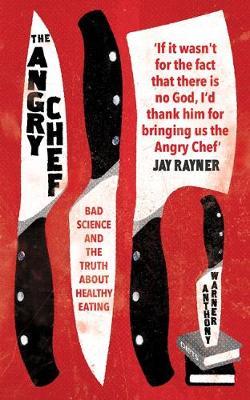The angry chef: Bad science and the truth about healthy eating by Jay Rayner

One world, 2017. ISBN 9781786072160
(Age: 16+). Recommended. Diets. Nutrition. Scientific thinking. Jay
Rayner is the angry chef - he is angry about the false claims and
misconceptions peddled by the fad diet industry. He begins the book
with the story of the Easter lapwing. He describes the spring-time
discovery of hares often alongside scraped nests of colourful eggs -
giving birth to the medieval myth of the Easter bunny. However the
eggs had not been laid by the frolicking hares but by the elusive
wetland bird, the lapwing. People were fooled by the correlation of
hares and eggs and jumped to their own conclusions. It is human
nature to see correlation and assume causation - overlooking the
many possible confounding factors.
In his explose of fad diets, Ray presents many examples of mistaken
beliefs and pseudo-science, examples of mischievous hares sat next
to a pile of colourful eggs. He exposes the false science behind
each diet: from gluten-free, alkaline, detox, sugar-free,
carbohydrate-free, paleo, to the promotion of the wonder foods of
coconut oil and antioxidants, the dangers of the facile ideas of
clean eating, GAPS diet and cancer cures, the demonisation of
processed foods, the simplistic concept of good vs bad food. He
rants with anger at the false claims, the bullshit, and the fake
gurus that people seem to blindly follow, but his anger is tempered
with a good dose of humour that often made me laugh out loud.
And if there is anywhere to lay the blame for all this - it is our
education system. Instead of teaching scientific facts, he argues
that our science courses should be teaching the scientific method -
the need to look for and respect evidence and an understanding of
what constitutes proof. Science should teach children to doubt and
to question, and to learn about concepts such as 'regression to the
mean'. He says
'We should be trying to produce children who understand that
correlation is not always causation, that anecdotes are not
evidence, that a theory is not something dreamed up in a pub, and
that interesting results are often wrong.'
If you are curious about the food theories, he lays it all bare, in
an easy to read manner. I could imagine any of the chapters being
taken as a case study for a science class to examine the theories
and test the evidence. Rayner presents the statistics, the theories
and the laughs, and above all he promotes guilt-free enjoyment of
one of the great pleasures of life - food.
Helen Eddy